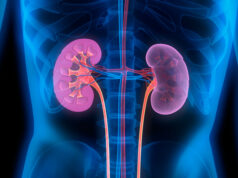An independent health safety group identified misuse of surgical staplers as a top health technology concern. The ECRI Institute, a nonprofit that maintains a database of hospital-reported adverse events, released its Top 10 Technology Hazards report.
The report is intended to predict what issues will be important in the coming year and make practical recommendations to hospitals to prevent them, said Robert Schluth, senior project officer of health devices for ECRI.
“The topics that we include are problems that we know can occur, can cause harm, and can be prevented if appropriate measures are taken,” Schluth said.
Surgical staplers rose to the top of ECRI’s list this year after the Food and Drug Administration made public an analysis of 109,997 stapler incidents since 2011. That analysis revealed 412 deaths, 11,181 injuries and 98,404 device malfunctions. ECRI has investigated 75 stapler accidents during the past two decades.
“Surgical stapler issues are a problem that we deal with on a regular basis,” Schluth said. “These devices are used an awful, awful lot. Incidents with staplers certainly aren’t common, but they do occur.”
Most of the cases ECRI has investigated were due to the complexity of using the devices. Surgeons need to carefully choose the correct sized staple for the type of tissue they’re working with, and get good visibility into where the staple is being applied. For example, staplers used during a laparoscopic surgery are designed to staple tissue together and cut between the staple line. If that line isn’t perfectly closed, it could lead to leakage, Schluth said.
“Injuries and deaths from the misuse of surgical staplers are substantial and preventable,” ECRI Institute CEO Dr. Marcus Schabacker said in a statement. “We want hospitals and other medical institutions to be in a better position to take necessary actions to protect patients from harm.”
Cybersecurity for in-home care
ECRI also highlighted potential cybersecurity concerns for connected home healthcare as a risk to watch in the future. That can include the risk of data breaches that could compromise a patient’s privacy, as well as activity that could render a device unusable, or alter the validity of the data that is sent to a patient’s care team.
Not all of these necessarily have to be intentional breaches. In some cases, a loss of power at home or network connectivity could also be a concern.
Schluth said ECRI expanded its coverage of this topic as more care is shifting to the home.
“It’s more complicated managing devices in a patient’s home than in a hospital. You have less control of what’s happening there,” he said. “There are also factors related to patient compliance. Some patients can be better than others at being comfortable using a device, or troubleshooting network issues.”
Health IT connectivity
Two items in ECRI’s report also tied into providers’ ability to locate important health data. Missing implant data prior to MRI scans and medication errors from dose timing discrepancies in electronic health record systems were ranked eighth and ninth respectively on the list.
For certain implants, an MRI scan can cause them to heat up or move. Patients don’t always know if a device is contraindicated, or even the type and model of their device.
“It’s very important that MRI staff knows that a patient has an implant and has information about that implant,” Schluth said. “It can be surprisingly hard to track down that information.”
The full list
The full list includes:
- Misuse of surgical staplers
- Adoption of point-of-care ultrasound is outpacing safeguards
- Infection risks from sterile processing errors in medical and dental offices
- Hemodialysis risks with central venous catheters
- Unproven surgical robotic procedures
- Alarm, alert and notification overload
- Cybersecurity risks in connected home healthcare
- Missing implant data can delay or add danger to MRI scans
- Medication errors from dose timing discrepancies in EHRs
- Loose nuts and bolts can lead to device failure, severe injury
Photo credit: shapecharge, Getty Images







